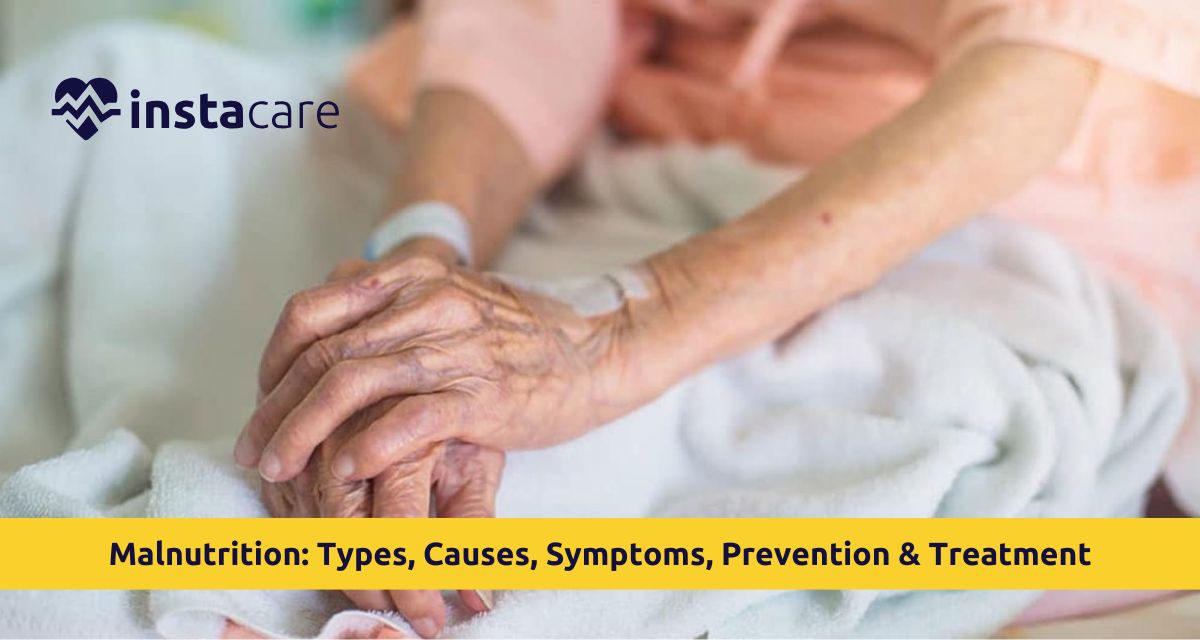Global malnutrition statistics show that stunting or wasting because of improper feeding is impacting millions of children up to the age of five. Or, lifestyle problems of heavy intake of fast foods are resulting in increased obesity cases. Therefore, in an effort to stop the health crisis of the world, malnutrition trends, etiology, presentation, prevention, and management must be understood.
What is Malnutrition?
Malnutrition has also been referred to as an imbalance in the nutritional condition. Malnutrition occurs when the body does not get sufficient or too many nutrients it requires. The imbalance will bring varying Malnutrition health effects depending on how severe and long the same lasts.
- Undernutrition exists as a state of insufficiency in the necessary nutrients like vitamins, proteins, and minerals.
- Overnutrition is the consumption of calories that are higher than the demand of body in the absence of their association with physical activity, leading to obesity and its consequences.
Malnutrition cuts across all ages but differently for child malnutrition and adult malnutrition. Malnutrition in children comes in the form of stunted growth, growth retardation, and impaired immunity, while in adults, such diseases as diabetes,
cardiovascular disease, and osteoporosis can be established.
Types of Malnutrition
There are two overall types of malnutrition:
Undernutrition
- Stunting: decreased height for age, often as a result of chronic undernutrition.
- Wasting: lower weight-for-age height, usually from acute food deprivation or disease.
- Underweight: lower age-for-age weight, a composite of wasting and stunting.
- Micronutrient deficiencies: deficiency of vitamins and minerals such as iron, iodine, and vitamin A.
Overnutrition
- Consequence of excess calorie consumption, more so from inappropriate diet.
- Causes type 2 diabetes, hypercholesterolemia, hypertension, and obesity.
- Newly developed issue in urban existence owing to the nature of settled living.
Early recognition of such malnutrition facilitates the introduction of some measures on preventive as well as curative levels.
Causes of Malnutrition
Causes of malnutrition can be multi-dimensional, on economic, social, and health levels:
- Poverty and hunger: Unavailability of nutrient foods is one of the broader reasons, especially in developing nations.
- Poor diet: Relying on packaged meals, white sugar, and junk foods results in malnutrition in industrial nations.
- Disease: Intestinal disease, diabetes, or cancer impacts nutrient intake.
- Ignorant mother: Malnourished mothers give birth to stunted or underweight children.
- Ignorance of activity: Proper diet and healthy eating education is not performed, making it challenging.
- Environmental issues: War, conflicts, and disasters ruin food chains.
Symptoms and Signs of Malnutrition
Symptoms of malnutrition and overnutrition vary. Symptoms of undernutrition are:
- Symptoms of undernutrition
- Slowing child growth
- Wasting of muscle and weight loss
- Poor immunity and infections
- Irritability, dizziness, and weakness
- Delayed wound healing
- Symptoms of overnutrition
- Unwanted and abnormal weight gain or obesity
- Malnutrition risk factors such as diabetes and cardiovascular disease
- Central fat storage
- Weakness and breathlessness
Pre-detection of health outcomes of malnutrition is essential to be able to implement early intervention and ideal health outcomes.
What is Diagnosis of Malnutrition?
Diagnosis of malnutrition is a variety of clinical assessment and investigations:
- Physical examination: Physical examination is the initial diagnostic step for malnutrition. The practitioners assess BMI, recent loss of weight, i.e., several months, frank muscle wasting, and fat loss. Pale color or edema or brittle hair are also signs of deficiency of a nutrient.
- Blood tests: Most information about malnutrition arrive via blood tests. Hemoglobin and protein are necessary because blood tests quantify the amount of vitamins and minerals correctly. Deviation in hemoglobin values shows anemia, whereas deviation in vitamins and minerals shows deficiency.
- Anthropometric measurement: Weight, skinfold thickness, height, and mid-arm circumference in children are all elements of anthropometric measurement. Anthropometric measurement is used in identifying wasting, underweight, or stunting.
- Medical history: Disease history is one of the important ones to take into account in diagnosing malnutrition. Physicians verify the history of disease in the past, existing diseases, dietary intake, and eating habits. Malnutrition will be susceptible to develop due to such diseases as gastrointestinal disturbance, infection, or abnormal food. It is utilized in full to develop effective Malnutrition treatment and prevention based on patients' conditions.
Physicians can also monitor the diet of the patient and screen for Malnutrition complications as anemia, osteoporosis, or diabetes.
Prevention of Malnutrition
Malnutrition prevention is a multi-stakeholder endeavor and includes individuals, community, and governments. The most significant steps are:
- Balanced diet: Eat dense nutrient food such as vegetables, fruits, whole grain, lean protein, and good fat.
- Public health measures: Food fortification, immunization programs, and health education programs.
- Maternal and child health: Healthy infant diet, promotion of breastfeeding, and antenatal care.
- Education: Continuous sensitization of healthy diet and food hygiene.
- Relief from poverty: A Healthy diet is affordable at low prices to everyone.
- Policy intervention: Government policies can be formulated that can improve food security as well as healthy living.
Treatment Options of Malnutrition
Malnutrition management depends upon etiology and severity. Interventions employed are:
- Dietary modification: Protein, vitamin, and mineral diet is provided by the dietician.
- Supplementation: Iron, folic acid, vitamin D, and calcium supplements are provided in deficiency.
- Pharmacologic management: Pharmacologic management of the underlying disease leading to malabsorption of nutrients.
- Personalized meal plans: Therapeutic diet in the form of ready-to-use therapeutic food (RUTF) is provided to severely malnourished children.
- Lifestyle modification: Exercise and decreased consumption of junk food are the learned activities in overnutrition.
- Counseling: On occasion, eating disorders or stress are the etiology of inadequate diet and require counseling.
Conclusion
Malnutrition is an epidemic with severe consequences on health. Malnutrition causes stunted growth among children, non-communicable disease in adults, and unnecessary death. Malnutrition in adults and children needs to be treated simultaneously with treatment and prevention.
Treatment of the cause of malnutrition through treatment, educating individuals to eat healthy food, and providing healthy food to the population helps individuals win over its effects successfully. Malnutrition is treatable anywhere in the world by international cooperation and right policy that reduces the gap of food security, Malnutrition and poverty, and public health.
Please book an appointment with the
Best Nutritionist in Lahore, Karachi, Islamabad, and all major cities of Pakistan through
InstaCare, or call our helpline at 03171777509 to find a verified doctor for your disease.

